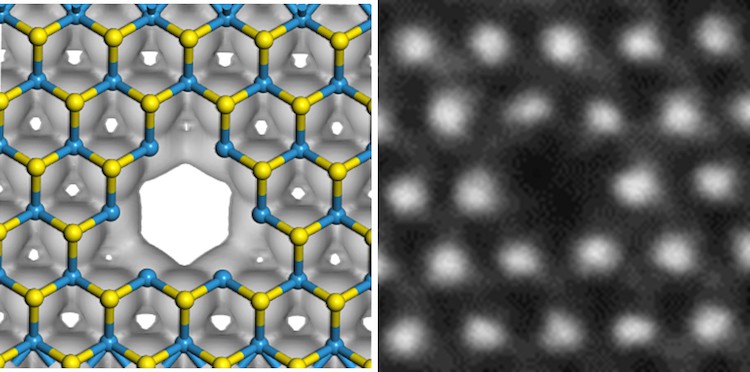
Gases flow through a porous membrane at ultrahigh speeds even when the pores’ diameter approaches the atomic scale. This finding by researchers at the University of Manchester in the UK and the University of Pennsylvania in the US shows that the century-old Knudsen description of gas flow remains valid down to the nanoscale – a discovery that could have applications in water purification, gas separation and air-quality monitoring.
Gas permeation through nano-sized pores is both ubiquitous in nature and technologically important, explains Manchester’s Radha Boya, who led the research effort along with Marija Drndić at Pennsylvania. Because the diameter of these narrow pores is much smaller than the mean free diffusion path of gas molecules, the molecules’ flow can be described using a model developed by the Danish physicist Martin Knudsen in the early decades of the 20th century. During so-called Knudsen flow, the diffusing molecules randomly scatter from the pore walls rather than colliding with each other.
Until now, however, researchers didn’t know whether Knudsen flow might break down if the pores became small enough. Boya, Drndić and colleagues have now shown that the model holds even at the ultimate atomic-scale limit.
Measuring gas flow through atomic-sized holes
The Manchester-Pennsylvania team performed their experiments on 0.3 nm-wide holes drilled in a monolayer of tungsten disulphide (WS2), a two-dimensional material. Until recently, the only way to check that such holes were present and of the right size was to inspect finished samples using high-resolution aberration-corrected scanning transmission microscopy (AC-STEM). While this “manual inspection” method is accurate, it is also painstaking, says team member Ashok Keerthi. As an alternative, Drndić and colleagues developed a technique for making hole-filled samples using focused ion beam (FIB) irradiation, which they demonstrated last year.
In the present work, the researchers created a system for measuring gas flow through atomic-sized holes and used their flow measurements to quantify the density of holes in a sample. To do this, they mounted their samples on silicon chips and placed them between two vacuum chambers: one at variable pressure and the other held at high vacuum and connected to a mass spectrometer. The samples were sealed in with O-rings, so that the holes in the WS2 membrane were the only connecting path between the two chambers through which gas molecules (helium, in this case) can flow, Boya explains.
Close to values predicted by Knudsen theory
The researchers found that the WS2 monolayers containing atomic-sized pores are mechanically robust and that helium gas flows through them rapidly. The flow values they measured are within an order of magnitude of the values predicted by Knudsen theory and, surprisingly, there is no (or only a minimal) energy barrier to the flow through the pores.

Frictionless flow in 2D channels
“Our work has enabled a robust method for confirming the formation of atomic apertures over large areas using gas flows,” Boya says. This method is, she adds, “an essential step for pursuing their prospective applications in various domains, including molecular separation, sensing and monitoring of gases at ultra-low concentrations”.
Members of the teams say they now plan to further investigate the pores’ stability over time. “We also plan to look into gas separation through these tiny structures,” Drndić tells Physics World.
The present research is detailed in Science Advances.
